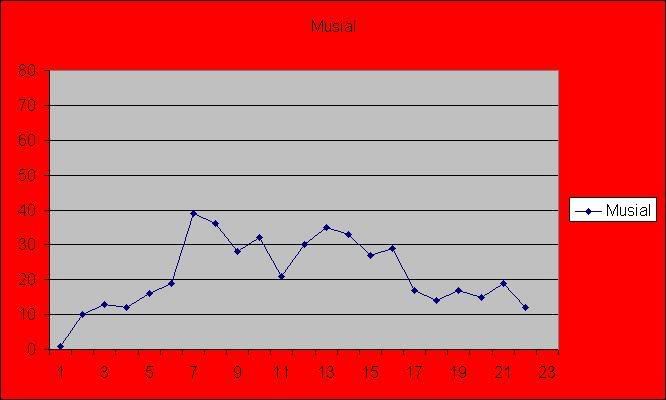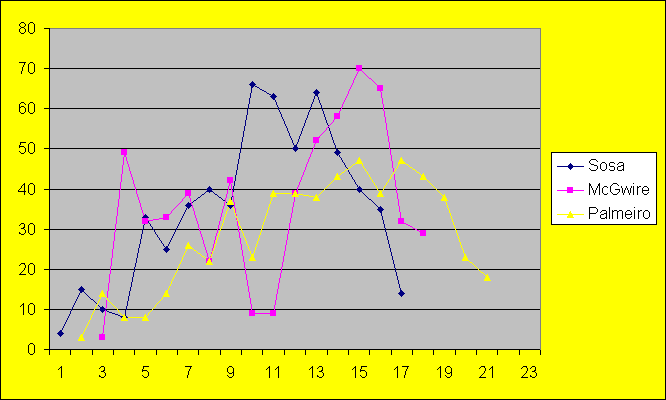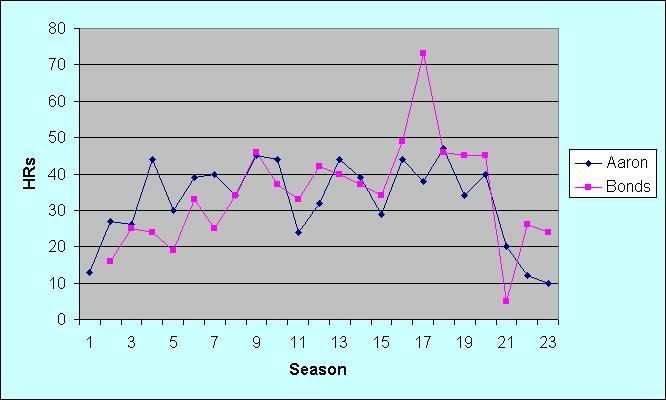I've had a few vague and disconnected thoughts this week about Aaron and Bonds - I'm not sure why - and I started looking over their careers a little...
I went and made a graphic, and ever since I've been deeply, deeply confused.
This is the career progression of HRs per at bat for Henry Aaron. Or Barry Bonds. I forget which.

And this is the progression for the other guy. Barry or Henry. One of them, anyway.

Everybody knows about these two guys. Don't we? One of them was universally regarded as one of the great all-around players in the game - and then, late in his career, he decided to become the home run champ. After never leading his league in HRs per at bat, he suddenly led the NL three years in a row. Beginning at age 37. Whereas the other guy was always known to be one of the great sluggers in the game, and led the league in HRs per at bat no fewer than eight times, beginning with his age 27 season.
Henry and Barry.
I went and made a graphic, and ever since I've been deeply, deeply confused.
This is the career progression of HRs per at bat for Henry Aaron. Or Barry Bonds. I forget which.

And this is the progression for the other guy. Barry or Henry. One of them, anyway.

Everybody knows about these two guys. Don't we? One of them was universally regarded as one of the great all-around players in the game - and then, late in his career, he decided to become the home run champ. After never leading his league in HRs per at bat, he suddenly led the NL three years in a row. Beginning at age 37. Whereas the other guy was always known to be one of the great sluggers in the game, and led the league in HRs per at bat no fewer than eight times, beginning with his age 27 season.
Henry and Barry.







